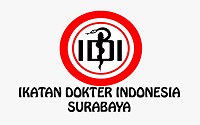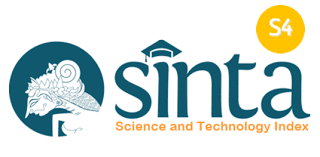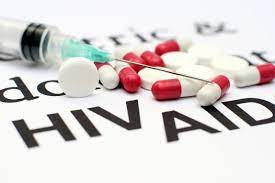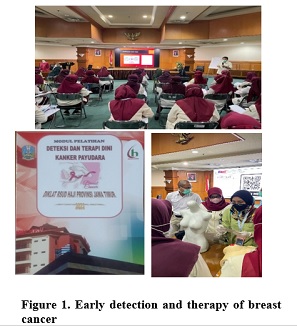The Effect of Comprehensive Sexual Education on Adolescent Behavior in Using Contraception : A Systematic Review

Adolescence is a transition period from childhood to adulthood. This period is crucial because there are many physical and psychological changes. One issue that is quite rife in Indonesia is teenage pregnancy, which will ultimately lead teenagers to have abortions. The case above proves that it is essential to equip adolescents with the knowledge and skills to make responsible choices. Comprehensive Sexual Education (CSE) is believed to help solve this problem and achieve the Sustainable Development Goals (SDGs) by 2030, when CSE also conveys the importance of contraception and its benefits. The lack of systematic reviews of studies that highlight the effect of implementing Comprehensive Sexual Education on current contraceptive use makes researchers interested in conducting this systematic literature review. This research uses a Systematic Literature Review (SLR) using PICO (Population, Intervention/Issue, Comparison/Context, Outcome), and Boolean operators are used to facilitate searching studies. PRISMA flowcharts were used in this research until two studies were included in the analysis. Literature quality assessment was conducted using the quality assessment tool for quantitative studies from EPHPP (Effective Public Health Practice Project). Two cross-sectional studies were based in the United States. The sample sizes in studies range from 5000 to 7000. The results of this study show that comprehensive sexual education influences the use of contraceptives today, although it is not very significant. However, there are still many biases in this research. There is a need to conduct randomized controlled trials or multicenter cohort studies that use the same evaluation parameters to strengthen future systematic review research.
INTRODUCTION
Adolescence is a transition period from childhood to adulthood1,212. This period is crucial because there are many physical and psychological changes33. These changes often cause many problems for teenagers, one of which is that too many teenagers receive information that is inaccurate, incomplete, or full of judgments that affect their physical, social, and emotional development both within and outside the scope of Sexual Reproductive Health (SRH)44. One issue that is quite widespread in Indonesia is teenage pregnancy. 2020 People’s Welfare data shows that as many as 45.1% of Indonesian women aged ≤ 20 years have experienced their first pregnancy55. This will ultimately lead teenagers to have abortions. In many cases, due to insufficient preparedness from health, emotional, mental, educational, socio-economic, and reproductive aspects, adolescent girls are more likely to self-abort or seek unsafe abortion services66. Abortion cases in Indonesia are estimated to increase every year. Data from the 2017 Indonesian Demographic and Health Survey shows that the incidence of abortion in Indonesia reached 30% per 100 thousand live births77. Unsafe abortion globally, every year, approximately 3 million girls aged 15 to 19 years undergo hazardous abortion88.
The above case is evidence that it is essential to equip adolescents with the knowledge and skills to make responsible decisions in their lives, especially as they are increasingly exposed to sexually explicit material through the Internet and other media9–129101112. Comprehensive Sexual Education (CSE) is believed to help solve these problems and achieve Sustainable Development Goals (SDGs) by 203013–15131415.
Comprehensive Sexual Education (CSE) is a curriculum-based teaching and learning process about the cognitive, emotional, physical, and social aspects of sexuality2,16216. Comprehensive Sexual Education also conveys the importance of using contraception and its benefits4,17417.
Literature shows that contraceptive use among sexually active adolescents varies widely around the world, with behavioral, cultural, social, and health system factors playing a huge role in that18-2118192021. For example, changes in adolescent behavior, such as increased use of contraceptives, are associated with a lower pregnancy risk among adolescents.
The lack of systematic reviews of studies that highlight the effect of implementing Comprehensive Sexual Education on current contraceptive use makes researchers interested in conducting this systematic literature review.
MATERIALS AND METHODS
This study utilizes a systematic literature review (SLR). It is a research methodology that reviews multiple studies that identify, investigate, evaluate, and interpret all available research in a topic area of an interesting phenomenon with a specific related research question2222. In systematic review research, research questions are compiled using Population, Intervention/ Issue, Comparison/ Context, outcome (PICO). PICO in this study is as follows:
Population | Adolescent |
Intervention/Issue | Comprehensive Sexual Education |
Comparison/Context | Non-Comprehensive Sexual Education |
Outcome | Current contraceptive use |
Figure 1.Example caption for this image
There are inclusion and exclusion criteria in determining studies, which are as follows:
Inclusion Criteria | Exclusion Criteria |
Studies/literature in English and/or Indonesian | Sources come from Non-Research Studies (conference papers, book chapters, reports) |
Using studies from the last 10 years | The source is in the form of a systematic review/review article |
Full text | |
In this research literature search, electronic databases used ScienceDirect, Wiley Cochrane Library, PubMed, and Scopus to identify relevant studies. In this step, search for keywords (search terms) using Boolean Operators (search commands), including AND / OR / NOT. The keywords (search terms) used are (Comprehensive Sexual Education OR Comprehensive Sexuality Education) AND practical AND effect AND contraception.
Based on search results using predetermined keywords, a total of 1688 studies were obtained. Then, 47 studies were eliminated due to duplication, leaving 1641 studies to be screened. At the screening stage, 1583 studies were excluded due to unmatched titles and abstracts, leaving 58 articles to be assessed for eligibility. In the eligibility assessment, 56 articles were excluded because PICO was unsuitable, did not meet the inclusion and exclusion criteria, did not provide complete data analysis, or did not meet the literature quality assessment criteria. Literature quality assessment was done using the quality assessment tool for quantitative studies from the Effective Public Health Practice Project (EPHPP)2323. The results of the literature quality assessment are attached in Table 3.
Data extraction was carried out using a modified data collection form from Cochrane. The data researchers collect from the articles reviewed includes author, article title, research setting, research methods, year of publication, time of research implementation, research sample, independent variable, dependent variable, results, and article quality previously assessed. This data is attached in Tables 4, 5, and 6.
| Author | Component Ratings | Global rating | |||||
|---|---|---|---|---|---|---|---|
Selection bias | Study design | Confounders | Blinding | Data collection method | Withdrawals and dropouts | ||
(Cheedalla, Moreau, and Burke, 2020)2424 | 1 | 3 | 1 | 1 | 1 | 2 | 2 |
(Rasberryet al., 2022)2525 | 1 | 3 | 1 | 1 | 1 | 2 | 2 |
No. | Author | Journal, Year, Volume, Page | Title | Place and Time of Research | Research Methods | Research Sample | Independent Variables | Dependent Variables |
1. | (Cheedalla, Moreau, and Burke, 2020)2424 | Contraception: X, 2020, 2, 1000048 | Sex education and contraceptive use of adolescent and young adult females in the United States: an analysis of the National Survey of Family Growth 2011–2017 |
Singh JA, Siddiqi M, Parameshwar P, et al. World Health Organization Guidance on Ethical Considerations in Planning and Reviewing Research Studies on Sexual and Reproductive Health in Adolescents. Journal of Adolescent Health 2019; 64: 427–429. DOI: 10.1016/j.jadohealth.2019.01.008
American College of Obstetricians and Gynecologists. Committee Opinion No. 678: Comprehensive Sexuality Education. Obstetrics & Gynecology 2016; 128: e227–e230. DOI: 10.1097/AOG.0000000000001769
Santrock JW. Perkembangan Anak. 11th ed. Jakarta: Erlangga, 2008.
UNESCO. International technical guidance on sexuality education: an evidence-informed approach. Paris: United Nations Educational, Scientific and Cultural Organization, https://www.unfpa.org/sites/default/files/pub-pdf/ITGSE.pdf (2018). https://www.unfpa.org/sites/default/files/pub-pdf/ITGSE.pdf
BPS. Statistik Kesejahteraan Rakyat/Welfare Statistics 2020. Jakarta: Badan Pusat Statistik Indonesia, 2020. https://web-api.bps.go.id/download.php?f=Nm6Zx4Wd1Oowc7t1V6HODWxJZ3JsQnZZcXZIN2lwNlI5R1VOVVdYZ1IxTGZhNGkrNm9DTXlYN1VIVWNWZ0MwaURGck85YTJhNkNVWHRWQURMMnc0Z1VOU2E5aXNjbXBDMTZweHJFOWk5TWNZKzk4bUJHSXlxaFBJNHNVR3pML0VHcEpjNmVydjArTjFMdWp0dmpyaDRQRXFBUUNwaXdxRitKcjdRQkJmTWE0NzNEZTc2Ulh0QmpSbkwrYndlc3V3VjJIeUFRLzRDYjgzQlI5NWZHRlQ4TWZhZmphRm5XN0JQNFREVE9kcVBkQ0Y4MldvVHh6MkptS0hrVnF5TTc5RU9vazVFRER4LzY5cFRNMEk=&_gl=1*1wfky6t*_ga*MTU0OTU0NDU4OC4xNzI5NDc5MjM0*_ga_XXTTVXWHDB*MTczNzUxMjQzNi43LjAuMTczNzUxMjQzNi4wLjAuMA.
Guttmacher Institute. Adolescent Pregnancy and Its Outcomes Across Countries, https://www.guttmacher.org/sites/default/files/pdfs/pubs/FB-Adolescent-Pregnancy-Outcomes-Across-Countries.pdf (2015).
SDKI. Survei Demografi dan Kesehatan Indonesia 2017. Jakarta: Badan Pusat Statistik (BPS), Badan Kependudukan dan Keluarga Berencana Nasional (BKKBN) dan Kementerian Kesehatan RI, 2017. https://ia802800.us.archive.org/30/items/LaporanSDKI2017/Laporan%20SDKI%202017.pdf
WHO. Adolescent Pregnancy Factsheet, https://apps.who.int/iris/bitstream/handle/10665/112320/WHO_RHR_14.08_eng.pdf (2014). https://iris.who.int/bitstream/handle/10665/112320/WHO_RHR_14.08_eng.pdf;jsessionid=69DBC603F247D08DF44B704F3D1180B6?sequence=1
Chi X, Hawk ST, Winter S, et al. The Effect of Comprehensive Sexual Education Program on Sexual Health Knowledge and Sexual Attitude Among College Students in Southwest China. Asia Pac J Public Health 2015; 27: NP2049–NP2066. DOI: 10.1177/1010539513475655
Chibuye S, Kumatongo B. The role of Comprehensive Sexuality Education on Child Sexual Abuse and Teenage Pregnancy among secondary school learners. Int J Edu Inno Res 2022; 1: 135–143. DOI: 10.31949/ijeir.v1i2.2477
Badriah S, Tambuala F, Herlinah L, et al. The effect of comprehensive sexual education on improving knowledge, attitudes, and skills in preventing premarital sexual behavior in adolescents. Kontakt 2023; 25: 404–410. https://kont.zsf.jcu.cz/pdfs/knt/2023/01/09.pdf
Hersh AR, Saavedra-Avendaño B, Schiavon R, et al. Sexuality Education During Adolescence and Use of Modern Contraception at First Sexual Intercourse Among Mexican Women. Journal of Adolescent Health 2019; 65: 667–673. DOI: 10.1016/j.jadohealth.2019.05.028
Lindberg LD, Maddow-Zimet I. Consequences of Sex Education on Teen and Young Adult Sexual Behaviors and Outcomes. Journal of Adolescent Health 2012; 51: 332–338. DOI: 10.1016/j.jadohealth.2011.12.028
Kohler PK, Manhart LE, Lafferty WE. Abstinence-Only and Comprehensive Sex Education and the Initiation of Sexual Activity and Teen Pregnancy. Journal of Adolescent Health 2008; 42: 344–351. DOI: 10.1016/j.jadohealth.2007.08.026
Chin HB, Sipe TA, Elder R, et al. The Effectiveness of Group-Based Comprehensive Risk-Reduction and Abstinence Education Interventions to Prevent or Reduce the Risk of Adolescent Pregnancy, Human Immunodeficiency Virus, and Sexually Transmitted Infections. American Journal of Preventive Medicine 2012; 42: 272–294. DOI: 10.1016/j.amepre.2011.11.006
Centers for Disease Control and Prevention. School Health Profiles 2020: Characteristics of Health Programs Among Secondary Schools, https://www.cdc.gov/healthyyouth/data/profiles/index.htm (2023, accessed 8 January 2024). https://www.cdc.gov/school-health-profiles/media/pdf/CDC-Profiles-2020.pdf
UNESCO. The journey towards comprehensive sexuality education: global status report. Paris: United Nations Educational, Scientific and Cultural Organization (UNESCO), https://unesdoc.unesco.org/ark:/48223/pf0000379607.locale=en (2021). DOI: 10.54675/NFEK1277
Centers for Disease Control and Prevention. About Teen Pregnancy | CDC, https://www.cdc.gov/teenpregnancy/about/index.htm (2023, accessed 5 January 2024). https://www.cdc.gov/reproductive-health/teen-pregnancy/?CDC_AAref_Val=https://www.cdc.gov/teenpregnancy/about/index.htm
Godeau E, Nic Gabhainn S, Vignes C, et al. Contraceptive Use by 15-Year-Old Students at Their Last Sexual Intercourse: Results From 24 Countries. Arch Pediatr Adolesc Med 2008; 162: 66. DOI: 10.1001/archpediatrics.2007.8
Manlove J, Ikramullah E, Mincieli L, et al. Trends in Sexual Experience, Contraceptive Use, and Teenage Childbearing: 1992–2002. Journal of Adolescent Health 2009; 44: 413–423. DOI: 10.1016/j.jadohealth.2008.09.006
Santelli J, Sandfort T, Orr M. Transnational Comparisons of Adolescent Contraceptive Use: What Can We Learn From These Comparisons? Arch Pediatr Adolesc Med 2008; 162: 92. DOI: 10.1001/archpediatrics.2007.28
Lusiana, Suryani M. Metode SLR untuk Mengidentifikasi Isu-Isu dalam Software Engineering. SATIN 2018; 3: 1–11. DOI: 10.33372/stn.v3i1.347
Effective Public Healthcare Panacea Project. Quality Assessment Tool for Quantitative Studies. Effective Public Healthcare Panacea Project, https://www.ephpp.ca/quality-assessment-tool-for-quantitative-studies/ (accessed 8 January 2024).
Cheedalla A, Moreau C, Burke AE. Sex education and contraceptive use of adolescent and young adult females in the United States: an analysis of the National Survey of Family Growth 2011–2017. Contraception: X 2020; 2: 100048. DOI: 10.1016/j.conx.2020.100048
Rasberry CN, Young E, Szucs LE, et al. Increases in Student Knowledge and Protective Behaviors Following Enhanced Supports for Sexual Health Education in a Large, Urban School District. Journal of Adolescent Health 2022; 70: 588–597. DOI: 10.1016/j.jadohealth.2021.05.015
Copyright (c) 2025 Nurul Dzakiyyah, Endyka Erye Frety, Reny I'tishom

This work is licensed under a Creative Commons Attribution-ShareAlike 4.0 International License.
- The journal allows the author to hold the copyright of the article without restrictions.
- The journal allows the author(s) to retain publishing rights without restrictions.
- The legal formal aspect of journal publication accessibility refers to Creative Commons Attribution Share-Alike (CC BY-SA).
- The Creative Commons Attribution Share-Alike (CC BY-SA) license allows re-distribution and re-use of a licensed work on the conditions that the creator is appropriately credited and that any derivative work is made available under "the same, similar or a compatible license”. Other than the conditions mentioned above, the editorial board is not responsible for copyright violation.































